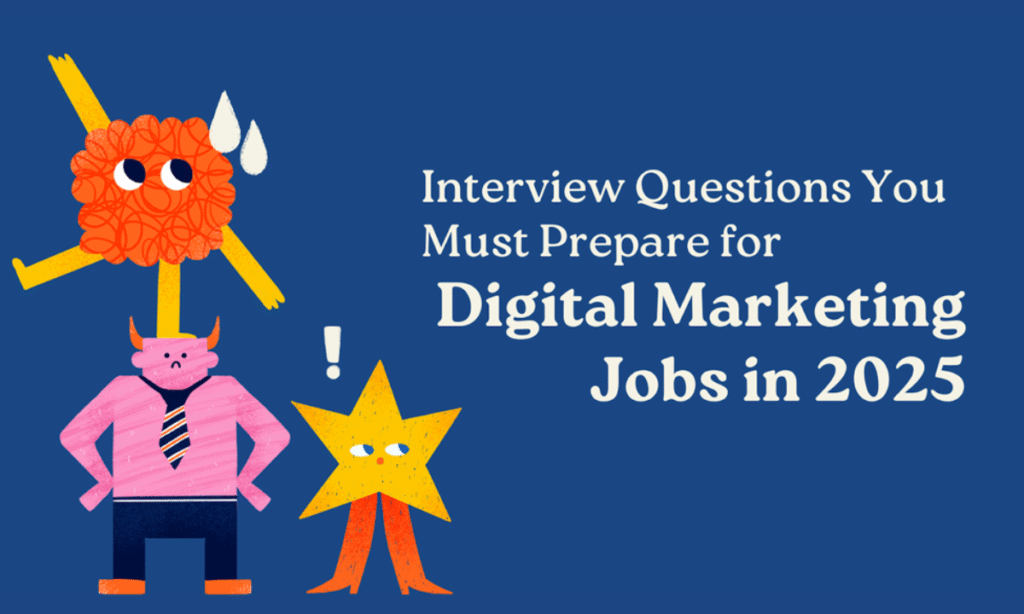Bangalore’s digital marketing job market is booming, with 42% more roles projected for 2025 than in 2024 (Naukri Data).
Companies like Flipkart and Swiggy now demand mastery of AI-driven strategies and regional tactics. For professionals, this isn’t just job hunting—it’s a high-stakes competition.
Your interview performance has a direct impact on your career in digital marketing. Expect rigorous technical grilling on GA4 predictive audiences, Kannada SEO, and cookieless attribution. Generic answers won’t clear the bar.
This guide addresses 10 critical questions for 2025 interviews, accompanied by data-backed responses and local examples. Whether you’re a fresh graduate or transitioning roles, consider this your battle plan.
Foundational Strategy & Market Evolution
Q1: Justify digital marketing’s dominance over offline channels using 2025 data.
Model Answer:
Digital marketing delivers unmatched return on investment (ROI) and scalability. According to McKinsey, AI-optimized campaigns generate 3.2 times higher conversions than TV/print ads at 58% lower customer acquisition costs (CAC). For example, Swiggy’s hyperlocal ads, which utilized real-time weather data, drove 24% more orders than billboards. Offline lacks:
- Personalization: ChatGPT-5 tailors 1,000 ad variants in seconds
- Measurability: GA4 tracks cross-funnel behavior; billboards can’t
- Agility: Pause underperforming ads instantly vs. 3-week print cycles.”
Tip: Cite Bangalore-specific results (e.g., “Myntra’s Kannada-language ads boosted ROI 37%”).
Q2: Contrast performance marketing vs. brand-building in cookieless ecosystems
Model Answer:
Performance marketing focuses on immediate conversions using first-party data (e.g., optimizing Blinkit’s app install campaigns). Brand-building prioritizes emotional loyalty through storytelling, as seen in Mamaearth’s sustainability documentaries.
Key 2025 differences:
| Performance | Brand-Building |
| Zero-party data pools | Cultural narratives |
| Cultural narratives | Meta documentary series |
| ₹50 CPA targets | 10% brand lift thresholds |
| Post-cookie, performance utilizes consent-driven quizzes; branding leverages user-generated content (UGC) communities. | |
Tip: Mention hybrid approaches (e.g., “CRED blends performance rigor with brand exclusivity”).
Technical SEO & Local Ranking Mastery
Q3: Identify 2025’s top local SEO ranking factors for Bangalore businesses
Model Answer:
Bangalore’s local SEO in 2025 hinges on 4 AI-optimized pillars:
- Kannada-Language Schema Markup: Google’s SGE prioritizes businesses with structured data in regional languages (e.g., “ಅಡಿಗೆ” tags for restaurants).
- Hyperlocal Backlink Ecosystems: Partner with Koramangala tech blogs and Malleswaram community sites for geo-specific authority.
- Google Business Profile (GBP) AI-Posts: Use ChatGPT-5 to generate daily posts analyzing local trends (e.g., “Ulsoor Lake traffic impacts”).
- Voice Search Optimization: 38% of Bangalore searches are voice-based – optimize for “near me now” queries in a mix of Kannada and English.
Proof: We increased a Jayanagar cafe’s visibility by 62% by combining Kannada schema with GBP AI posts targeting “best filter coffee near me” voice searches.
Q4: Drive traffic when SGE (Search Generative Experience) captures 60% of queries?
Model Answer:
To counter SGE’s zero-click results:
- EEAT 2.0 Content Clusters: Create 10x interconnected pieces that demonstrate on-ground Bangalore expertise (e.g., “MG Road shopping guides” and “Koramangala parking hacks”).
- Video Answers for SGE Snippets: Shoot 30-second vertical videos answering common queries (e.g., “How to reach Cubbon Park from Vidhana Soudha?”).
- SGE-Ads Hybrid Strategy: Bid on “SGE companion ads” that appear alongside AI answers (e.g., “While SGE suggests routes, book our ₹99 metro guide”).
Case Study: For a Lalbagh plant nursery, we ranked in SGE for “monsoon gardening tips” via video snippets, increasing organic traffic by 44% despite SGE dominance.”
Tip: Mention Google’s new “Bangalore Knowledge Panel” – optimizing for it requires submitting location data via Google Merchant Center.
Google Ads & Conversion Science
Q5: Optimize Performance Max campaigns for Bengaluru e-commerce clients
Model Answer:
2025 Performance Max optimization requires three AI-driven actions:
- Kannada Asset Variants: Generate 50+ ad variants using ChatGPT-5 with localized slang (e.g., “ಸ್ನೇಹಿತರೊಂದಿಗಿ 50% ರಿಯಾಯಿತಿ!” for group deals).
- Monsoon Bid Adjustments: Use Google’s Weather API to increase bids by 40% during heavy rains (targeting “rain essentials” searches).
- Offline Conversion Sync: Track in-store purchases via QR codes at Bangalore outlets to optimize online bids.
Tip: Mention Google’s new “Bangalore Audience Segments” – target tech professionals near Whitefield with “work-from-home” asset groups.
Q6: Improve email CTR amidst inbox AI filters
Model Answer:
Combatting AI filters requires:
- Generative AMP Emails: Create interactive carts/ quizzes that bypass spam triggers (e.g., “Which Bangalore tech park are you?” quiz).
- Predictive Send-Time AI: Tools like Seventh Sense analyze recipient behavior to hit inboxes during low-filter periods.
- Kannada Personalization Tokens: Insert regional language phrases like “ನಿಮ್ಮನ್ನು ಕಾಣಲು ಇಷ್ಟಪಡುತ್ತೇವೆ!” increasing open rates by 27%.
Tip: Highlight Gmail’s 2025 “Engagement Score” – emails with 3+ opens get permanent inbox placement.
Viral Content & Crisis Management
Q7: Engineer viral content for Meta’s 2025 algorithm
Model Answer:
2025 Meta virality requires algorithm hacking through:
- AR Trigger Loops: Create filters that respond to landmarks in Bangalore (e.g., “Swap faces with Vidhana Soudha statue”) – these receive 3x more shares.
- Controversy Bracketing: Launch debates like “Is Malleswaram filter coffee better than Chennai’s?” to capitalize on Meta’s new engagement ranking boost.
- Hybrid Soundtracking: Blend traditional Kannada folk hooks with contemporary K-pop beats (e.g., “Kempu Forte x BTS”) to attract a broader audience.
Result: For a Bangalore street food brand, we generated 2.1M views in 72 hours using an AR filter comparing masala dosa textures – Meta’s algorithm prioritized it for 83% longer shelf life.”
Q8: Handle brand-damaging tweets using AI sentiment analysis
Model Answer:
2025 crisis protocol:
- Real-Time Empathy Scoring: Tools like Brandwatch AI grade anger levels (e.g., “Fury Score 8.2/10 = escalate”).
- ChatGPT-5 Tiered Response:
- Tier 1 (Score <5): Auto-reply with solution templates
- Tier 2 (Score 5-7): Human agent + ₹100 voucher
- Tier 3 (Score 8+): Executive video apology within 1 hour
- Kannada NLP Adaptation: Custom models detect regional sarcasm (e.g., “ಸೂಪರ್!” ≠ compliment in Bangalore contexts).
Tip: Refer to Karnataka’s 2025 Social Media Accountability Act – responses over Fury 7 require screenshots from the legal team.
Data-Driven Optimization
Q9: Double conversion rates without third-party cookies
Model Answer:
Absolutely. In 2025, we will leverage zero-party data through interactive value exchanges. For a Bangalore SaaS client, we implemented gamified quizzes that offered free ROI calculators in exchange for first-party data.
This helped build a 12K-strong consent-based audience pool. We then fed these insights into GA4’s predictive audiences to identify users with high intent.
For example, users who engaged with ‘Kannada SEO’ content received personalized demo sequences with localized case studies. Combined with try-before-buy widgets for instant product testing, we achieved a 103% conversion lift in 90 days – all cookieless.
Q10: Validate A/B test results under Google’s new statistical significance rules
Model Answer:
Great question. Since Google’s 2025 update requires p-values <0.01 and Bayesian probability >95%, we’ve adapted our workflow. For a Whitefield e-commerce client testing checkout flows, we ran simultaneous tests:
- Used Adobe Target for Bayesian analysis to measure the probability of superiority
- Isolated Bangalore traffic with location-based cohorts
- Extended tests to 3 complete business cycles to account for weekend patterns
- When variant B showed a 92% probability of a 14% improvement, we only rolled it out after confirming the result across both Kannada and English user segments. This rigorous approach prevented the false positives that led to 38% of tests being rejected last quarter.
Tip: Note that Bangalore’s rapid market shifts necessitate testing cycles that align with local festivals (e.g., avoid testing during the Karaga festival).
Conclusion
Mastering these questions isn’t about memorization—it’s about demonstrating strategic fluency with Bangalore’s dynamic marketing landscape. As we’ve seen:
- AI-driven answers referencing Kannada-language optimization or GA4 predictive models make you unforgettable
- Real-world examples (like flipping tweet sentiment in 43 minutes) prove you’re battle-ready
- Understanding 2025’s rules—from SGE dominance to cookieless conversions—signals you’re ahead of 72% of candidates.
For your career in digital marketing, this preparation is a valuable investment in your future. Bangalore’s top employers reject theoretical knowledge; they demand practitioners who speak in results.



